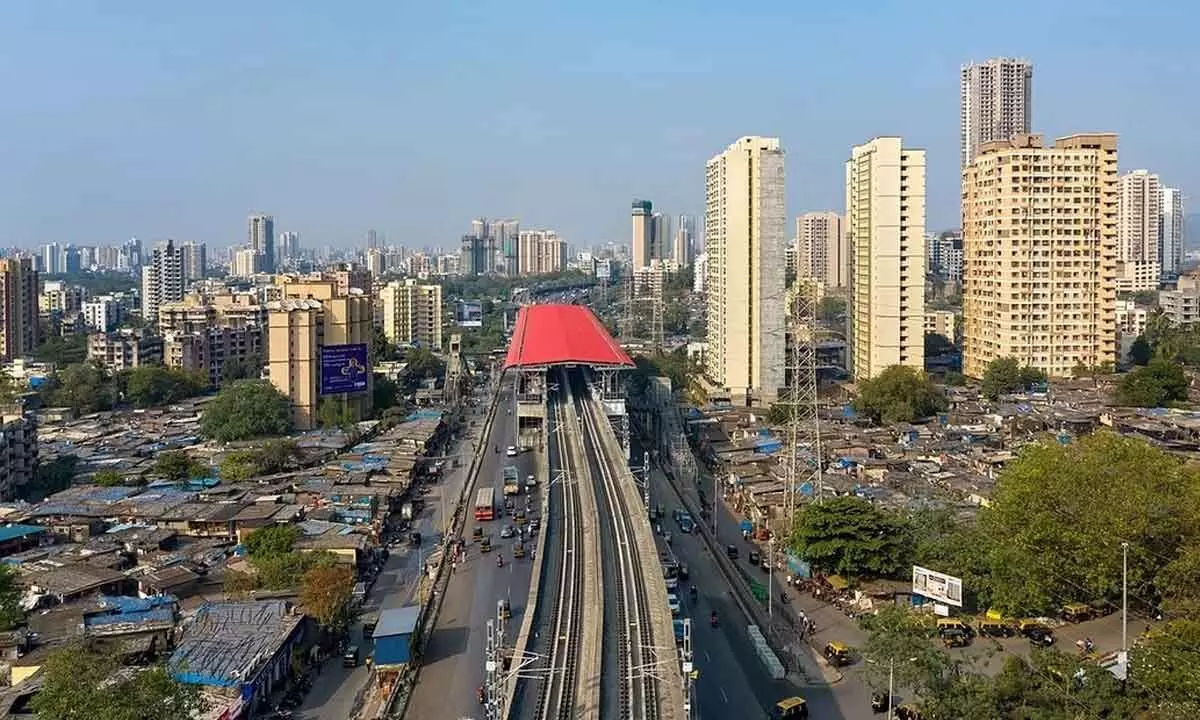Infra upgrade to fuel realty in MMR
Average rentals in prominent micro markets are likely to rise by about 5-10% by 2025 when compared to current levels
image for illustrative purpose

Infrastructure upgradation would also positively impact residential growth and open avenues for investments. Enhanced connectivity is likely to increase homogenisation of housing prices in Western suburbs, which accounts for the largest residential catchment in the region
Mumbai: With four key infrastructure projects of MMR - Mumbai Metropolitan Region, especially the lines which are set to be operational by 2024, Mumbai Trans Harbour Link (MTHL) and Phase 1 of both Coastal Road Project (CRP) and Navi Mumbai International Airport (NMIA), getting nearer to completion, the real estate market of the region is envisaged to see heightened activity.
As per Colliers’ latest report ‘MMR Infrastructure – Upgrading Real Estate’, in tandem with improved connectivity, commercial office micro markets of BKC and Western suburbs will see an uptick in annual leasing. The traditional micro markets of old CBD & Central Mumbai are set to receive a major facelift while the satellite market of Navi Mumbai will offer a plethora of real estate opportunities.
Talking to Bizz Buzz, Vimal Nadar, Senior Director & Head of Research, Colliers India says “With numerous infrastructure projects in pipeline and few prominent ones nearing completion, the real estate potential of Mumbai is set to be maximized. Driven by key upcoming projects such as Mumbai Trans Harbour Link, Phase 1 of both Coastal Road Project & Navi Mumbai International Airport and soon to be operation metro lines, the real estate landscape of entire MMR is going to get a new lease of life. Key markets like BKC, Western suburbs and Central Mumbai are likely to witness heightened occupier interest, leading to a 1.5x rise in office leasing in the next 2-3 years.”
At the same time, infrastructure upgradation would also positively impact residential growth and open avenues for investments. Enhanced connectivity is likely to increase homogenisation of housing prices in Western suburbs, which accounts for the largest residential catchment in the region, he said.
While coverage and usage adoption are of paramount importance in determining the success of upcoming infrastructure projects in the real estate growth story of MMR, timely completion is equally critical in achieving the desired socio-economic outcomes. Moreover, the projects will have a multiplier effect in the region, where it will not only reduce the burden on the existing infrastructure but boost the overall economy of the region. Decongestion, connectivity improvement and a sustainable growth across micro markets are likely to solidify MMRs preferred positioning for real estate investments in India.
Badal Yagnik, Chief Executive Officer, Colliers India said, ”The upcoming metro lines, especially those likely to be operational in the next 1-2 years, will play a key role in decongesting areas like BKC and Western suburbs to a large extent. BKC particularly stands to benefit the most from improved connectivity. With improved connectivity, BKC is likely to witness 1-2 msf of annual office space uptake 2025 onwards, a 1.5x increase compared to 2022 levels. Developers, too, have planned most of their upcoming projects in localities which are likely to witness maximum benefit from enhanced connectivity in the entire MMR region.
A healthy visibility of near to mid-term demand and supply scenario, will eventually firm up rentals across MMR. Average rentals in prominent micro markets are likely to rise by about 5-10 per cent by 2025 when compared to current levels.”
Once operational, metro lines 2B (DN Nagar-Mandale) and 3 (Colaba-SEEPZ) will provide the much-needed augmentation of public transportation system in BKC and annexe, leading to a likely 1.5X annual leasing 2025 onwards as compared to the 1 msf gross leasing in 2022. The upcoming supply of 7 msf in the next three years would increase the current stock (14 msf) in BKC and annexe by about 50 per cent, with the largest chunk to be ready once the metro lines are operational. Moreover, elevated demand levels are likely to drive average monthly rentals of BKC and annexe, higher by 5-10 per cent by 2025 as compared to current levels.
While earlier, the average housing prices declined as one moves northwards in western suburbs, with the upcoming infrastructural development, a sense of homogeneity in housing prices is expected in the next few years. Moreover, with metro work reaching an advanced stage, the market holds immense potential for investments as the housing price differential which was more than 80 per cent in Dahisar (compared to Santacruz) few years ago, has already moderated to less than 50 per cent. Although, the price differentiation within Western suburbs will continue to narrow down, overall residential prices in the area are likely to further head north in the next 2-3 years. Andheri, Jogeshwari, Malad, Goregaon, Lokhandwala, Kandivali and Borivali have already witnessed a 5-10 per cent rise in residential prices in the last 1-2 years.
At the same time, led by improved connectivity, the micro market will continue to see healthy office space uptake. 2025 onwards, annual gross leasing in Western Suburbs has the potential to reach 1.5X times 2022 levels (1.3 msf). Notably, pockets within Western suburbs such as locations along Andheri-Kurla Road and Malad-Goregaon stretch, which are preferred locations for flex operators, could see further traction in the next 1-2 years and can become the flex hot spots of the region.

